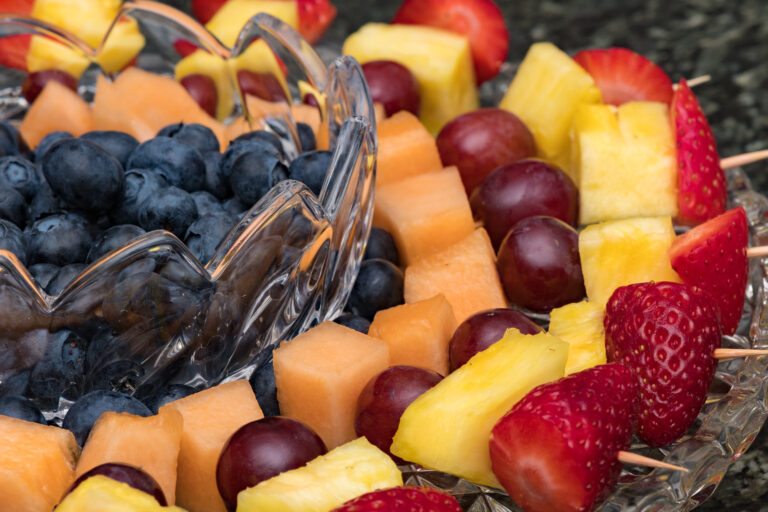The first recall warnings were issued on November 1, 2023, by Canada’s Food Inspection Agency (CFIA). On November 8, recalls began in the U.S. by companies that had produced, distributed, or packaged cantaloupe that held the same Mexico-based Malichita label and PLU as those associated with the Canadian recall. At that time, there were no known associated illnesses in the U.S. But as recalls continued, the Mexico-based Ruby brand cantaloupe was added, and illnesses and hospitalizations followed. On November 17, the FDA announced that in its investigation of the outbreak Salmonella Sundsvall infections, its whole genome sequencing analysis showed a genetic relationship between those who became ill in Canada and those in the U.S.
Although CFIA, FDA, and CDC are continuing the investigation – and warn against eating the recalled cantaloupe, any cut cantaloupe if the source is unknown, and any produce items that were processed alongside recalled cantaloupes – the source of the outbreak was traced in a relatively short time. However, the question remains as to how many of the 359 illnesses, 140 hospitalizations, and 8 deaths across the two countries may have been prevented had the industry been already compliant with the Traceability Rule.
Not only would the rule’s field-to-retail traceability lot coding requirements enable faster determination of the source, it would also allow for the more rapid identification of all the branches of distribution of implicated whole and further processed melon. This also illustrates a tangential benefit of consistently assigning and maintaining a traceability lot code for foods in the supply chain: when an issue is identified, the consistent lot coding allows industry and investigators to more rapidly “trace forward” products as well. As has happened many times in the past (think Romaine lettuce or tomatoes), the entire segment is being impacted regardless of the source; and with a 2021 estimated 1.2 to 1.5 billion pounds of cantaloupes produced annually in the US generating around $300 million in farm receipts, that’s a lot of product and revenue.
That impact is coming from both the inability to track some pre-cut melon, and that lack leading to news media not only warning against eating the recalled product and source-unknown pre-cut cantaloupe, but headlining articles as simply, “Don’t eat pre-cut cantaloupe,” even misattributing federal agencies, such as the headline: “CDC: Do *not* eat any pre-cut cantaloupe.” As we’ve seen by the impact of such blanket statements on the industry segments of an implicated product, the more quickly the source and routes of distribution are determined, the faster all product can be taken off the market, resulting in both fewer health effects and less industry impact.
For those who are still working through the CTEs and KDEs of their FTL foods, how will the activities of the Traceability Rule make a difference? As we discuss in Chapter 1 of the TAG Traceability Toolkit:
With the goal of the rule being to facilitate more rapid and accurate traceback investigations during an outbreak, FDA requires that the foods on the Food Traceability List (FTL) be traceable to the smallest unit by which they move through the supply chain until they are received at a retail food establishment or restaurant. This means that a traceability lot code (TLC) must be assigned and maintained at specific points throughout the supply chain. Additionally, the rule requires the determination of Key Data Elements (KDEs) for Critical Tracking Events (CTEs) along with the traceability lot code (TLC), because FDA stated:
“we recognize that in some situations, parts of a single traceability lot might end up in multiple places. If an entity such as a distribution center breaks up a single traceability lot and ships the product to multiple locations, each shipment will have its own set of KDEs associated with it, and the combination of the traceability lot code and the information regarding the shipping event ( e.g., information about the food’s recipient) will provide a sufficiently descriptive record of that event despite the fact that another portion of the same traceability lot (with the same traceability lot code) was shipped elsewhere.”
This likely represents the most significant operational change for the industry because, practically speaking, each case on a pallet would need to be traced and associated with an individual pallet or the retail food establishment or restaurant where it is received. Thus, changes in operations or case labeling may be required to ensure compliance with the new rule. In addition to that change, there are further requirements for a Traceability Plan describing the procedures you use to maintain the required records; to identify foods on the FTL that you manufacture, process, pack or hold; and to assign TLCs to foods on the FTL, as applicable.
While full compliance with the Traceability Rule (required by January 2026) is quite complex, its expanded tracing and tracking will greatly improve the ability to quickly determine where outbreak-related product has been distributed, even such lots as pre-cut produce. This not only reduces the potential of consumer illness and death, but also reduces the potential of safe foods being recalled and disposed.
For more information:





